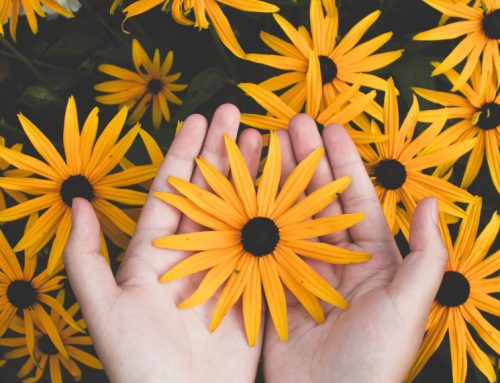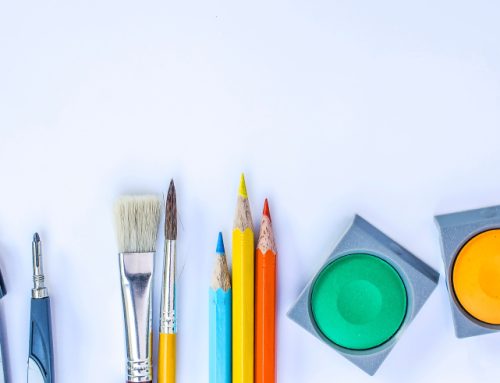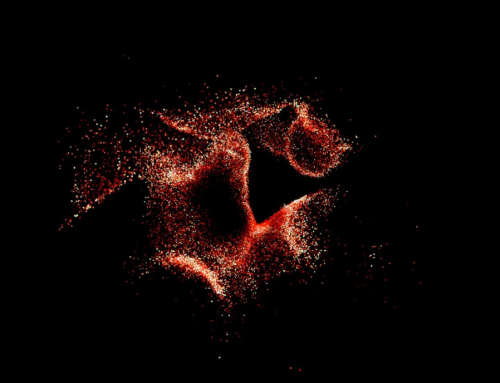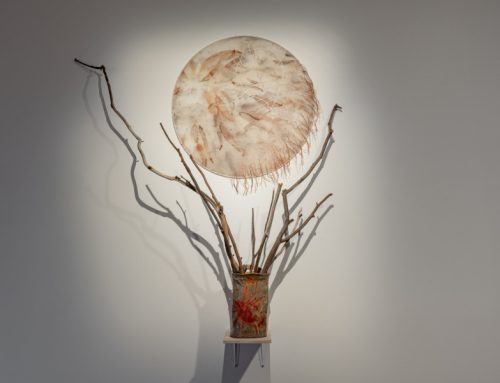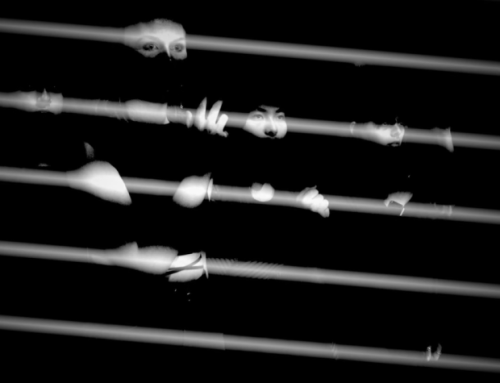Jessica Conneely is a dancer, educator and specialist in creative ageing & engagement. For over 7 years, she has passionately and innovatively supported the health and wellbeing of seniors via movement and dance, and her endeavours have led her to found Dance4Wellbeing, co-direct Dance for Parkinson’s Australia and become involved in ongoing research. Below, Jessica reflects upon the intersection of dance, health and community.
Leading Dance for Health & Wellbeing: Reflecting on Practice
On the eve of a few recent events of creativity and joy around danced based participation in community, as an artist I wanted to reflect what it means to facilitate movement for older adults.
The intersection of practice that sits within a creative modality of movement and music with and for older adults has become a niche but growing sector here in Australia. For me, following a career as a professional company dancer, teacher and choreographer, I found what came after an opportunity to grow as an artist and to adapt my knowledge and creativity to an older cohort by dancing with & supporting ongoing health in older adults.
Dance is an unusual path to take as a young adult
when the practice & pressure becomes serious at an elite level. The discipline involved and the competition is not for everyone. In my generation, we got more negative feedback and setbacks as you strive for excellence and technical perfection just like an elite athlete with a ticking clock racing toward early career retirement because of the physicality involved and the growing talent field.
Aside from all this, you do it because for some of us, dance becomes you. Like exercise, you must regularly practice to finely tune your body & technique. Additionally, it feels good and there is a challenge involved. This challenge comes in different forms, physical, mental, emotional, technical and then when you find your place within a community group/company/organisation you gain a sense of belonging and feel part of a tribe.
These aspects are transferable to different contexts and mean different things to individuals, and when I found an organisation that used the unique skills of artists to connect to community and older adults in particular I was totally fascinated.
For years I had worked with young people and then begun as I got older to teach and educate young adults at university and TAFE, on the side teaching adult ballet classes.
I was at a crossroads
after having my own children and felt the industry had changed with competition driving the dance school sector and wider industry. I felt the art of dance was being lost to athleticism and commercial competitions with a “win at all costs” outcome seemingly to become the norm.
It was then that I discovered for the first time the small but growing area of Arts in Health. This was not new to the world but new to me. The fact that I could use my finely honed skills to connect, support and enrich lives of older people was like a light going on… I did not have to leave dance behind me, even better… I can grow older with dance and keep sharing and create that belonging that I felt with other artists and arts organisations.

Dance for Parkinson’s Australia event at the Sydney Opera House
Enter the unique Arts Health Institute and Dance for Parkinson’s Australia (DPA).
The latter still grows, the former no longer exists however lives on in many artists I know. I have learned much from both and continue to support DPA now as a co-director.
It was 7 years ago I shadowed 2 artists in aged care to observe how they engaged with older adults and to think how I could adapt this process using movement and music as the driver for said connection. These artists were both very different in approach and so I would learn to find my own individual way to a meaningful practice. This was like nothing I had seen before: light-hearted and carefully considered approaches that were tailored for the care home residents. Delivered with artistic engagement, respect and cleverly researched clues for connection behind the scenes.
This was it, I found a new tribe.
I had not smiled so much and did not know it was possible. I remember the very moment of my “audition” when I was asked to run a workshop for older people at the HQ in Newcastle. The artists were welcoming, friendly, open, warm people. Upon finishing, I was led to the rickety old heritage building lift by the legendary Jean Paul Bell with his animated smiley face & “we will call you!” and once the lift door closed I was overcome with emotion knowing I had found my people after a such a long break away from creative work & artists; my heart ached.
I knew then, I had much to learn
about older adults, conditions of ageing, how to work safely & inclusively with older bodies and be mentored all over again adding another several educated layers to my dance skills and this continues today.
After years of training in both Dance for Parkinson’s, Dementia and the Arts, Dance for Older people, courses, best practice grants, inclusive practice skillsets, community dance, dance practice exchanges, collaboration and more recently digital adaptation in creative arts – the learning never stops. Implementing new programs as a facilitator, you learn from the participants in different contexts whether it be community sessions, aged care programs or connecting online with older adults at home dancing with them and enjoying the process of engaging and moving with added social benefits of meeting new people all the time.
Via technology, I am fortunate to be able to connect regularly to groups from all over the country who feel that sense of belonging and great feeling of moving together to music.

Dance4Wellbeing ‘Make a Move’ online session
There is something incredibly special about connecting your craft to others
that creates a sense of contentment after every session. Experience becomes everything… people are so very different; personable skills are key.
Recently I had to pinch myself being immersed in the Dance for Parkinson’s Australia annual special event at the Opera House in Sydney. This beautiful, unique organisation continues to create ongoing groups of communities across Australia that support persons living with Parkinson’s to participate in regular dance-based artistic and creative classes that create connection, expression, imagination and hope via dance and music led by teaching artists trained to support the community and offer a regular beautiful artistic experience. The pioneering program from Brooklyn, New York – Dance for PD® has seen one of its founding teachers, David Leventhal, along with Mark Morris Dance group work tirelessly to advance this model across the world. The benefits are many and research is progressing.
David has been an inspiration to many and continues to support DPA ongoing with creativity and inspiration.
I, too, have been incredibly fortunate to have such strong, inspiring and creative mentors
in Teresa Conicella (TAFE NSW) for support and knowledge over the 6 year delivery of the accredited Movement Skill set training. Gail Hewton from RIPE Dance/Gold Moves (QLD) whom I have travelled, collaborated and shared knowledge with in our sector and beyond. Kevin Williams who recently stepped down from (ED) Arts Mid North Coast who is a trailblazer in Creative Ageing and has encouraged and supported Dance4Wellbeing ongoing. Erica Rose Jeffery who is a powerhouse and a wonderful inspirational person and artist in her own right. Dance for Parkinson’s Australia was founded by Erica Rose and continues to grow and share knowledge, a true pioneer in the Australian Dance landscape around the Dance for PD model.
 There is currently a relatively small pool of highly professional Australian dance artists
There is currently a relatively small pool of highly professional Australian dance artists
facilitating sessions for older adults in general who bring the magic to our ageing population. The hope is that many more will follow this path knowing that you do not need to retire completely from dance early, there are pathways to keep going with options, be employed for longer and some of us have created our own work and businesses to sustain our practice and train others up to work in this growing sector. There comes a time in a career when you must encourage and support others, offering knowledge that is valuable and essential for those to continue such important work. We need adults to keep moving through life for health, wellbeing, and connection to community.
What I have learned is that as we age, we need meaningful connection
to be amplified so that engagement is accessed with ease, everyone can move even if in a small way. Working with people living with dementia requires finely tuned communication skills. The art of attunement is key particularly when we want to resonate with another human. Movement can offer this with careful pairing of expression, curiosity and invitation. Music can offer the vehicle in which we ride, together they create a pathway to connection to self and others.
Future projects are to diversify & focus on delving deeper
into the engagement process through movement within the various groups I connect with, particularly aged care residents and the health sector– this is the key for unlocking people’s views around valuing arts participation and meaningful practice. I advocate for this work as the story telling through movement is the heart of the practice. I also write this hoping that the general public will understand that this practice is not just… ‘exercise to music’ that many across the ageing industry may think. Dance & movement artists that value and have trained for years to find connection with older adults are rare and are seriously creative in engaging our community. You must dig to find the gold, to find the meaningful moments, the hundreds of connections made and stories to be told, unfold them and bring them to life in movement and music to be shared. This validates people in a unique way and is a gift.
Much of the foundation training and models are adaptable for the Arts Health Sector which is now starting to gain more traction within Health and creative industries. Since Dec 2022 I have been leading movement in the ESTEEM Pilot program for Stroke recovery research with Hunter Medical Research Institute, NSW which is ongoing. Our sector continues to advocate for this important work which can and does change lives. We hope for more partnerships, collaboration and sharing, more professional training and more artists leaning into this varied and creative work.
 The Arts bring expression, belonging and purpose.
The Arts bring expression, belonging and purpose.
It’s the participants that share their thoughts & feelings around moving to music, some brought to tears of joy through the music or memory of a song, theme or creative sequence of movement. Others say they feel so good after a session and can’t wait till the next one, some say it’s the highlight of their week. Interestingly, many men who at first think ‘What! Dance – you have to be kidding!’ return week after week with some being with us for 6 years ongoing, the sessions supporting the management of their various chronic health conditions.
When you see firsthand a retired academic professor and ex-Australian Wallaby rugby player in his 80s take up painting and start exhibiting, something wonderful is happening…
I hope with all my heart when I am ageing into later life, an artist will lead me in a regular group of dance/music sessions to keep me on the dance floor & fill my cup…
Dance me to the end of love…
A reflection – Jess Conneely, founder Dance4Wellbeing, March 2023.

 There is currently a relatively small pool of highly professional Australian dance artists
There is currently a relatively small pool of highly professional Australian dance artists The Arts bring expression, belonging and purpose.
The Arts bring expression, belonging and purpose.